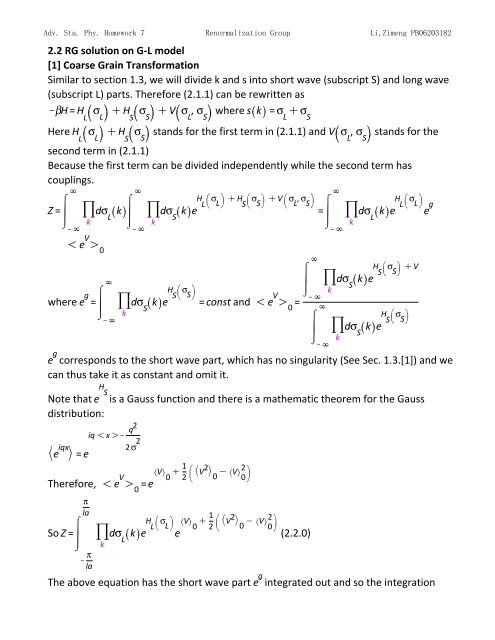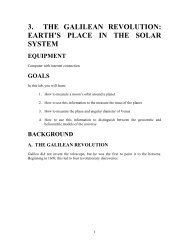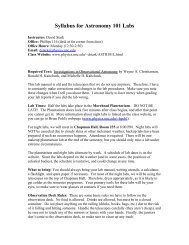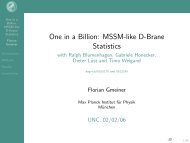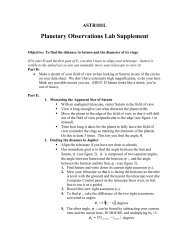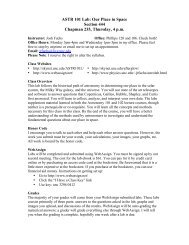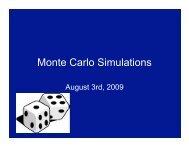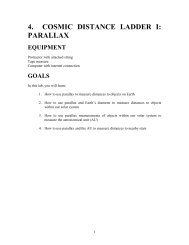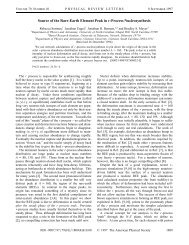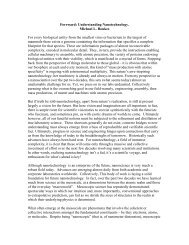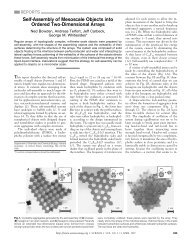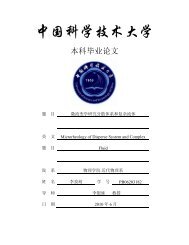Topics in Statistic Mechanics
Topics in Statistic Mechanics
Topics in Statistic Mechanics
You also want an ePaper? Increase the reach of your titles
YUMPU automatically turns print PDFs into web optimized ePapers that Google loves.
Adv. Sta. Phy. Homework 7 Renormalization Group Li,Zimeng PB06203182<br />
2.2 RG solution on G-L model<br />
[1] Coarse Gra<strong>in</strong> Transformation<br />
Similar to section 1.3, we will divide k and s <strong>in</strong>to short wave (subscript S) and long wave<br />
(subscript L) parts. Therefore (2.1.1) can be rewritten as<br />
where<br />
Here stands for the first term <strong>in</strong> (2.1.1) and stands for the<br />
second term <strong>in</strong> (2.1.1)<br />
Because the first term can be divided <strong>in</strong>dependently while the second term has<br />
coupl<strong>in</strong>gs.<br />
where<br />
and<br />
corresponds to the short wave part, which has no s<strong>in</strong>gularity (See Sec. 1.3.[1]) and we<br />
can thus take it as constant and omit it.<br />
Note that<br />
distribution:<br />
is a Gauss function and there is a mathematic theorem for the Gauss<br />
Therefore,<br />
So (2.2.0)<br />
The above equation has the short wave part<br />
<strong>in</strong>tegrated out and so the <strong>in</strong>tegration


